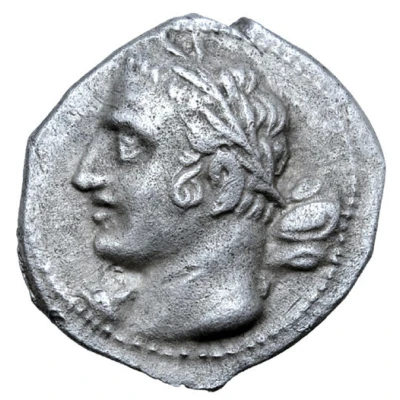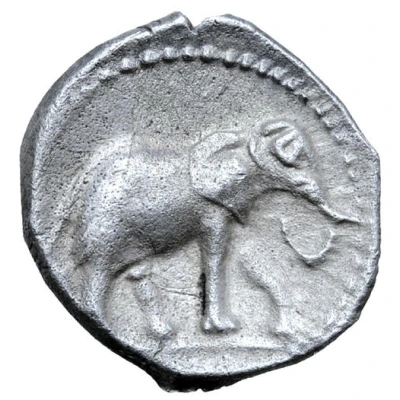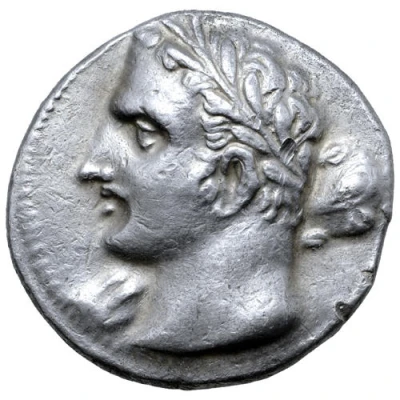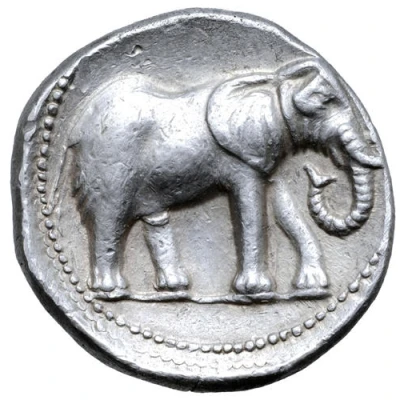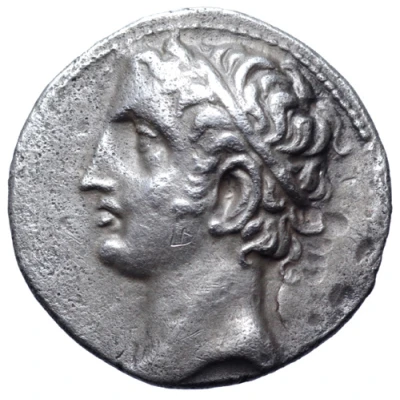
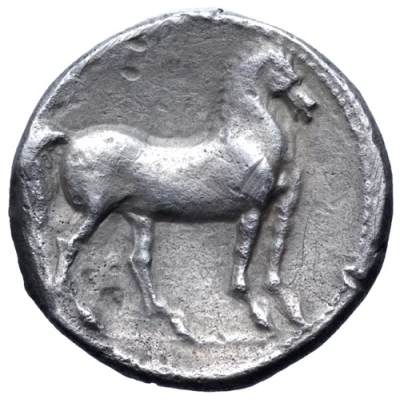

Shekel - Hasdrubal the Fair 229 BC - 228 BC
| Silver | 7.19 g | 22 mm |
| Issuer | Ákra Leuká (Punic Iberia) |
|---|---|
| Governor | Hasdrubal the Fair (228 BC - 221 BC) |
| Type | Standard circulation coin |
| Years | 229 BC - 228 BC |
| Value | 1 Shekel = 2 Drachm |
| Currency | Drachm |
| Composition | Silver |
| Weight | 7.19 g |
| Diameter | 22 mm |
| Shape | Round (irregular) |
| Technique | Hammered |
| Demonetized | Yes |
| Updated | 2024-10-09 |
| Numista | N#197637 |
|---|---|
| Rarity index | 97% |
Reverse
Horse standing right.
Comment
Only three specimens recorded by Villaronga.
L. Villaronga, Las monedas hispano-cartaginesas, Barcelona 1973, Class IV, 60 (same dies); AB 490 (Cartagonova).
MHC 57; Robinson, Punic 6(d).
In 237 BC, Hamilcar Barca, after having lost the First Punic War against Rome, but having won the Mercenary War against the Libyans, disembarked at Gadir with a Carthaginian expedition with the purpose of re-establishing Carthaginian authority in Iberia (Polybios, Histories, 2.1.6). Within 9 years, he had expanded the territory of Carthage well into the Iberian peninsula, securing control of the southern mining district of Baetica and Sierra Morena, before dying in battle in 228. Hamilcar was succeeded by his son-in-law Hasdrubal the Fair who expanded the new province by skilful diplomacy and consolidated it with the foundation of Akra Leuka (Greek: White Mountain or White Point, modern Alicante), Mahon and finally in 227, Qart Hadasht (= New Carthage = Latin: Carthago Nova, modern Cartagena), originally named Mastia, as his capital.
Interesting fact
One interesting fact about the Standard circulation coin Shekel - Hasdrubal the Fair (229 BC - 228 BC) from Ákra Leuká (Punic Iberia) made of Silver weighing 7.19 g is that it features an image of a Phoenician goddess, possibly Astarte or Tanit, on the obverse (front side), highlighting the cultural and religious influences of the Phoenicians in the region.
